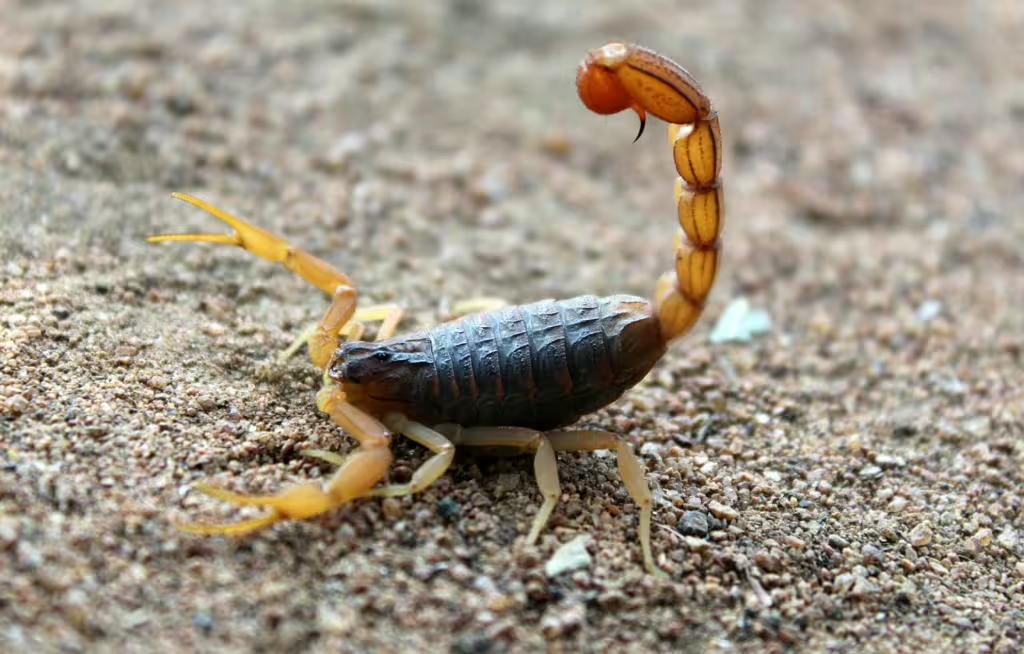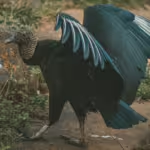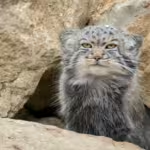In the natural world, it is the giants which draw our attention. We are in awe of whales breaching the surface of the ocean, herds of elephants lumbering through dense forests, or massive condors soaring high above mountaintops. There are good reasons why these iconic animals capture our imaginations so magnificently. It makes sense that they have often stolen the spotlight in documentaries, field guides, and on wildlife tours.
And yet, if we take a moment to look closer—much closer—we might find that a more mysterious, intricate universe exists just beneath the surface that calls us in. This world we speak about is one that thrives in the shadows of tree bark, beneath fallen leaves, under rocks, and within the fragile webs of dew-covered grass. What we are speaking about is a hidden realm of insects and arachnids, creatures that frighten some and fascinate others. In most cases, these tiny creatures are overlooked due to their size, yet each and every one of them is an essential part of the health and balance of their respective ecosystems.
The tiny creatures that we are about to discuss are architects and scavengers, pollinators and predators. They may not always be visible to the naked eye, but their influence is far greater than their size. Some of these creatures aerate soil and recycle nutrients; others pollinate plants, including crops that we, as a species, depend on. Many, if not all of them serve as a critical food source for neighboring birds, amphibians, reptiles, and mammals. Despite their small size, these critters are mighty in function and fierce in the fight for survival. Their bodies often harbor strange and beautiful adaptations—glowing abdomens, iridescent wings, intricately jointed limbs, and even natural camouflage that defies the eye.
Some of the creatures we will discuss cannot be seen by the naked eye, mimicking leaves or twigs, while others flash brilliant colors to warn predators and draw attention to themselves. Their behaviors are equally astounding and many are far different from what we would expect from such “simple” organisms. These behaviors include complex courtship rituals and cooperative hunting, as well as the construction of elaborate silk traps and underground homes.
In this article, we will delve deep into this hidden world to explore a few of the most fascinating and rare species of insects and arachnids on the planet. We will turn over the proverbial rock on these ill-perceived pests, shedding light on their unique traits and the irreplaceable roles they play in nature. Whether you’re a curious nature enthusiast, a budding entomologist, or simply someone who appreciates the wonders of the wild, these extraordinary critters are sure to surprise and inspire you to learn more.
Gooty Sapphire Ornamental Tarantula (Poecilotheria metallica)
Habitat: Native to the forests of southern India
Adaptations: Striking blue coloration used for camouflage and mating
Role in Ecosystem: This spider is a predator of small insects and its role is in helping regulate pest populations.
The vividly metallic, Gooty Sapphire Ornamental Tarantula is so-named because of its distinctive blue coloration. Few known species of tarantula are as stunning and elusive as this rare arachnid, which can only be found living in a small forest patch in Andhra Pradesh, India. The Gooty tarantula uses tree hollows to ambush prey, injecting them with a potent venom once it has them in its grasp. Though the Gooty is venomous, as stated, its bite is not lethal to humans. Sadly, its innate rarity makes it more vulnerable than most to both habitat loss and illegal pet trade.
Titan Beetle (Titanus giganteus)
Habitat: Lives in South American rainforests
Adaptations: One of the largest beetles—up to 6.5 inches long—with powerful jaws
Role in Ecosystem: The Titan Beetle is likely a decomposer or predator in larval form, although larvae of this species have never been observed.
The titan beetle’s sheer size and strength are impressive…at least in bug standards. The mandibles on this beetle are strong enough to snap pencils, wooden pencils, in half. An interesting thing about this animal is that adults of the species don’t eat, focusing solely on reproduction. While their precise ecological role remains a mystery, they’re believed to be important in nutrient cycling, like so many insects.
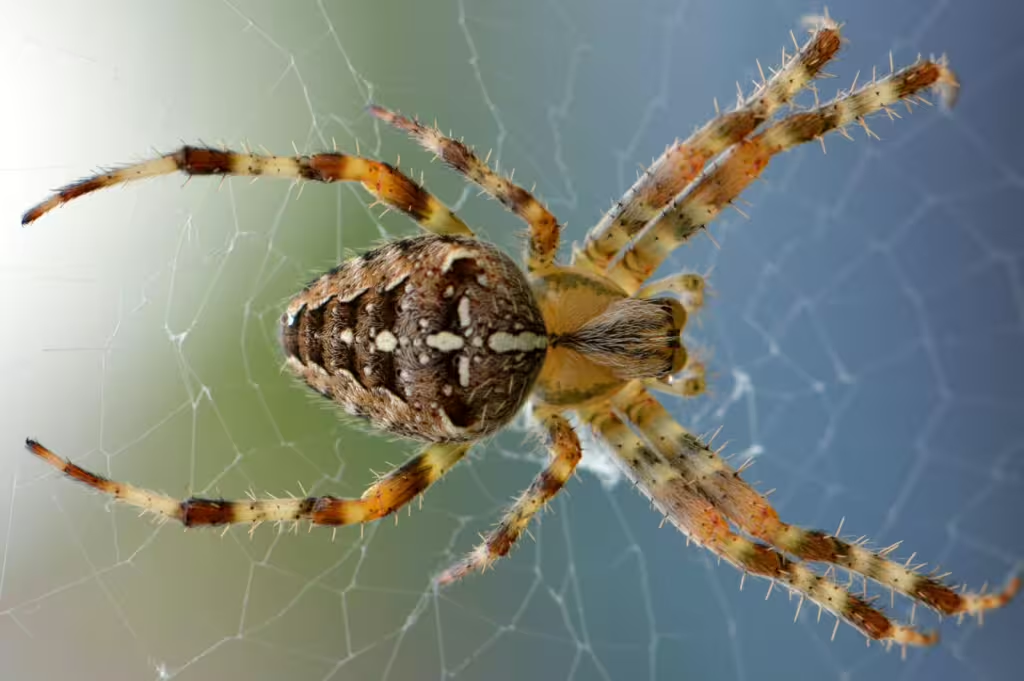
Peacock Spider (Maratus volans)
Habitat: This spider hails from Australia; the land of spiders.
Adaptations: Colorful flaps and courtship dance to attract mates
Role in Ecosystem: Predator of small insects, contributing to balance in microfauna populations
This tiny jumping spider is not like its larger, more venomous Australian cousins. Not only is it far more adorable, it is also infinitely more interesting. In many ways, this little critter has danced its way into the hearts of mates and biologists alike. When we say dance, we mean it, as male Peacock Spiders display vivid, fan-like abdominal flaps that they wave around during courtship. Their keen vision and complex behavior challenge the stereotype of spiders as simple, frightening, or even dangerous creatures.
Lord Howe Island Phasmid (Dryococelus australis)
Habitat: Originally Lord Howe Island, this species can now be found on Ball’s Pyramid, Australia
Adaptations: Camouflaged as sticks; nocturnal and slow-moving
Role in Ecosystem: The Phasmia is a Herbivore, once a part of the island’s plant regulation
Due to its rarity, size, and invasive rats, this species was once thought to be extinct. When the rats arrived on the boats of explorers and settlers, this large flightless stick insect was pushed to the very brink. It was unseen for centuries until it was rediscovered in 2001. In that time, it has since become a symbol of conservation, highlighting the importance of protecting isolated island ecosystems from the presence of invasive species.
Hercules Beetle (Dynastes hercules)
Habitat: These mighty beetles can be found in Central and South American rainforests
Adaptations: Males have massive horns for fighting; strong enough to lift 850 times their weight
Role in Ecosystem: Hercules beetles are decomposers, feeding on decaying wood and aiding nutrient recycling
Named after the mythical strongman, this beetle is one that exemplifies the extreme strength possessed by some insect species. They battle during mating season, though those battles are largely harmless, if not somewhat dramatic. Their larval stage is helpful in that they decompose wood, returning nutrients to the forest soil.
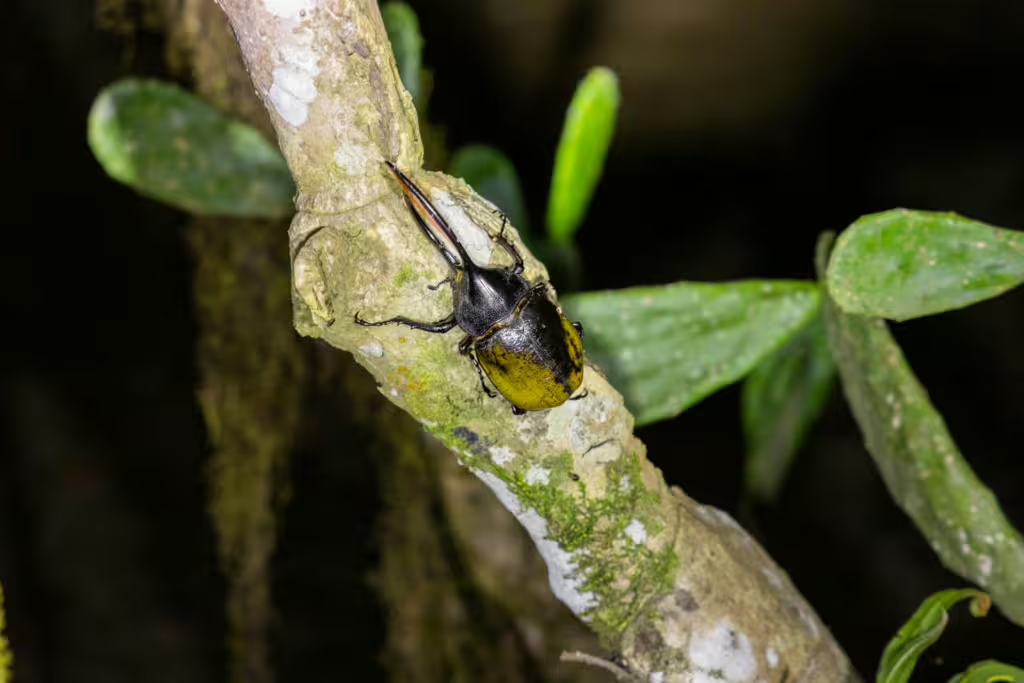
Antarctic Springtail (Cryptopygus antarcticus)
Habitat: If you can believe it, this inesct-relative lives on the Antarctic tundra
Adaptations: Antifreeze-like proteins to survive freezing temperatures
Role in Ecosystem: Decomposer and soil aerator in one of Earth’s harshest habitats
These tiny, wingless arthropods dwell in one of the most inhospitable place on Earth. In this ecosystem, they are essential to the sparse Antarctic ecosystem. They feed on fungi and decaying organic matter, keeping the soil ecosystem functioning, even under extreme and freezing conditions.
Devil’s Flower Mantis (Idolomantis diabolica)
Habitat: The Devil’s Flower Mantis can be found in East Africa
Adaptations: Petal-like limbs mimic flowers to lure pollinators
Role in Ecosystem: Like many mantis species, this one is an ambush predator, controlling insect populations
Arguably the most beautiful mantis species alive today, this insect has adapted to resemble an orchid in full bloom. This intricate bit of cosplay can fool prey into coming too close for their own good. Though delicate-looking, this marvelous mantis mimic a formidable predator.
Desert Hairy Scorpion (Hadrurus arizonensis)
Habitat: Southwestern United States deserts
Adaptations: Burrowing behavior and nocturnal hunting reduce water loss
Role in Ecosystem: The Desert Hairy Scorpion serves a role as both predator and prey, keeping insect populations in check.
This large scorpion species thrives in some of North America’s hottest environments, where it uses its unique biological adaptations to hunt and protect itself. It uses vibration-sensitive hairs to detect prey, including crickets, spiders, and even the occasional small lizard. This species is highly venomous and though sometimes kept as pets, should always be handled with care or preferably, not at all!
Glowing Cockroach (Lucihormetica luckae)
Habitat: Found in the Ecuadorian cloud forests…or it was, this insect might be possibly extinct at this point.
Adaptations: Bioluminescent spots may mimic toxic beetles
Role in Ecosystem: Scavenger, potentially helping recycle organic material
All we know about this astonishing and frankly, unbelievable animal, is known from a single specimen. In short, the so-called glowing cockroach is a mystery wrapped in light. If it does persist into the modern age, this amazing insect could serve as an example of convergent evolution. The running theory is that is utilized bioluminescence as a warning sign, just as many beetles use coloration to similar effect.
Orchid Bee (Euglossa dilemma)
Habitat: Central America and parts of Florida
Adaptations: Males collect and store fragrant compounds to attract mates
Role in Ecosystem: As with most bees, these insects are vital pollinators of orchids and other tropical plants within their ecosystem.
Orchid bees are iridescent, perfumed marvels of the natural world. Like many bees, they have a unique relationship with the flowers they favor, in this case, orchids. It is those flowers that the orchid bees pollinate while gathering scent compounds that they then use in mating displays; hence why we said perfumed. Regardless of how they smell, Orchid bees are keystone pollinators in tropical ecosystems and are essential to the continued health of those ecosystems.
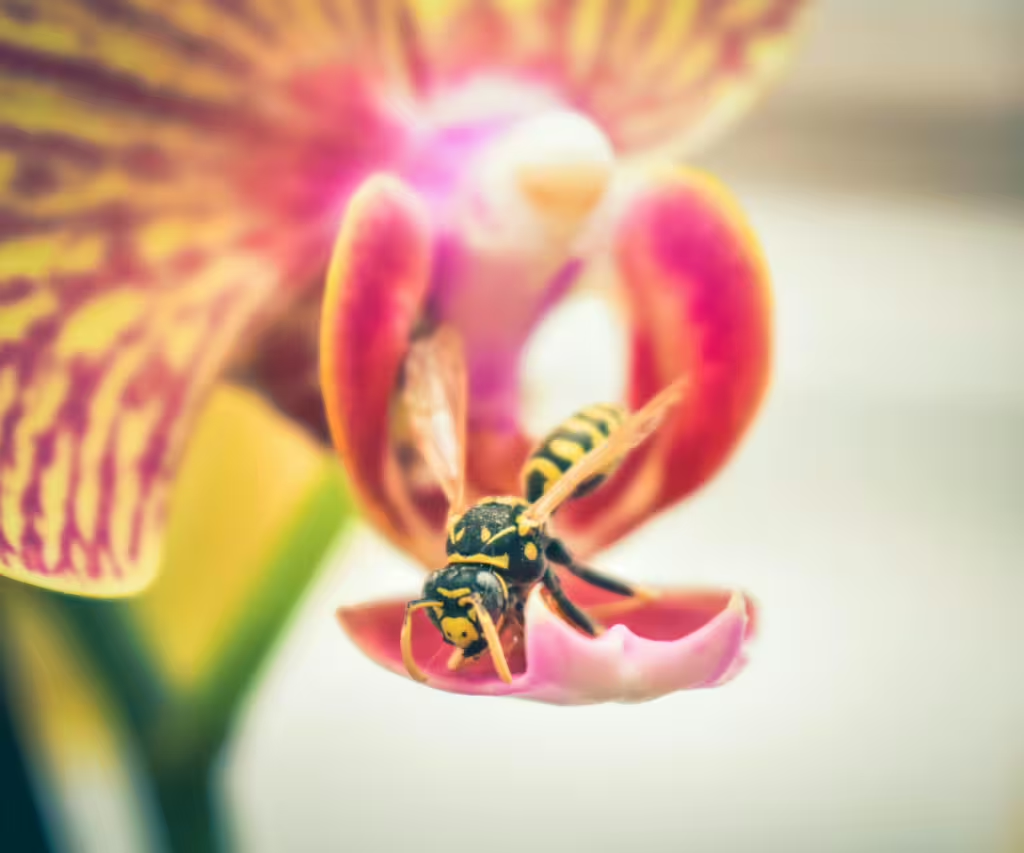
Giant Water Bug (Lethocerus spp.)
Habitat: These large aquatic insects can be found in freshwater lakes and ponds all over the world.
Adaptations: Strong front legs for grabbing prey; males carry eggs on their backs
Role in Ecosystem: Apex aquatic insect predator
Sometimes called “toe-biters,” these bugs are fierce hunters; yea, you heard us correctly. Despite their size, compared to some other animals, these insects prey on fish, frogs, and insects with equal voracity. In addition to being uncommonly large for insects, these bugs also happen to be unusually parental. This is because they demonstrate unusual care for their young, as males will carry and oxygenate their eggs until they hatch.
Atlas Moth (Attacus atlas)
Habitat: Southeast Asia
Adaptations: Wing tips mimic snake heads for predator deterrence
Role in Ecosystem: Adult moths are pollinators; larvae feed on leaves and recycle plant matter
The Atlas Moth, another great name for an insect, quite frankly, is one of the world’s largest moths. Though this insect is hardly capable of holding the world on its shoulders, the Atlas moth is essential for the environment…at least while its in its larval, caterpillar stage. When it does go through metamorphosis, the Atlas moth stops eating entirely, living only a few days thereafter to reproduce. Additionally, its defense adaptations include snake-mimicking wing tips that scare off birds and reptiles.
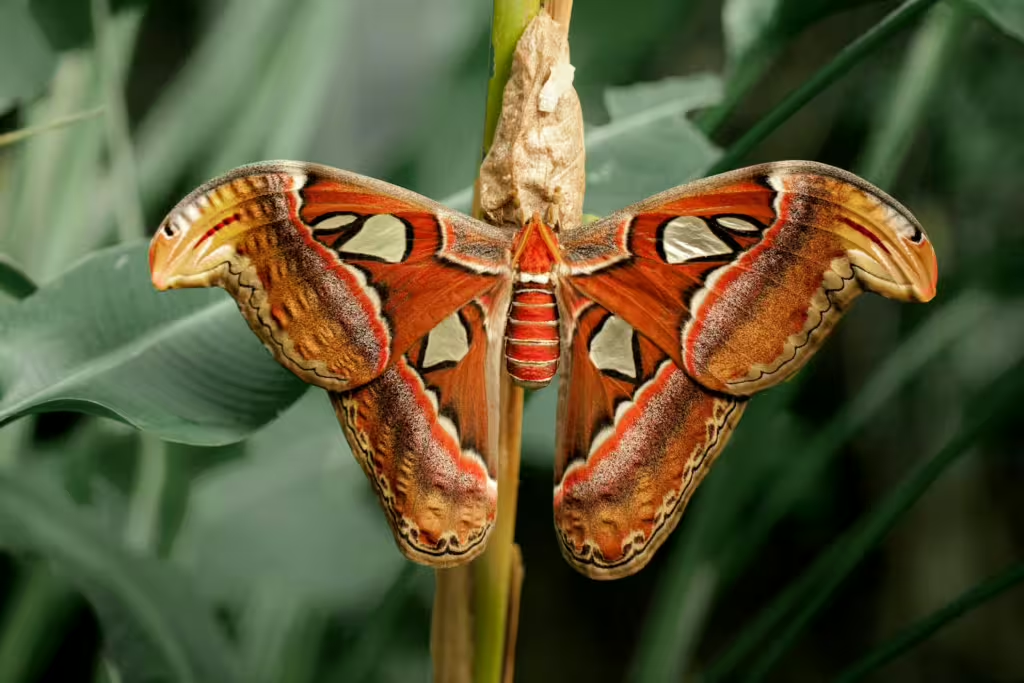
Why These Creatures Matter
Insects and arachnids often go unnoticed by humanity at large, but they are critical to healthy ecosystems as any of the largest species on land and sea. Whether they are pollinators, decomposers, predators, or prey, these tiny organisms help to maintain the balance of life. Here’s why they’re so indispensable:
- Pollination: Insects like orchid bees and Atlas moths pollinate plants, ensuring reproduction and biodiversity.
- Pest Control: Creatures like pseudoscorpions and peacock spiders manage populations of crop-damaging or nuisance species.
- Decomposition: Beetles like the Hercules and potentially the Titan beetle break down decaying wood and plant matter, returning nutrients to the soil.
- Food Web Support: Many of these creatures are food for birds, reptiles, and mammals, forming the base of food chains.
The Conservation Challenge
Unfortunately, many of these species are still at risk; and most of it is our fault. Habitat destruction, climate change, pollution, and the illegal pet trade are all continuous threats to the many insect and arachnid species that share our planet with us. Some, like the glowing cockroach we mentioned earlier, may already be extinct. Even if they aren’t, so many others are hanging on in tiny, fragmented habitats…and they are losing the fight thanks to humanity.
True Investigator Says…
As you can see, the world of rare insects and arachnids is filled with color, complexity, and far more charisma than most folks give them credit for. In many ways, these tiny titans of the natural world reveal how evolution creates astonishing adaptations and behaviors that are necessary for the continued survival of their respective ecosystems. In so many ways, these teensy creatures remind us that no living thing is too small to matter on a planet like ours.
Discover more from TrueInvestigator
Subscribe to get the latest posts sent to your email.
